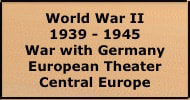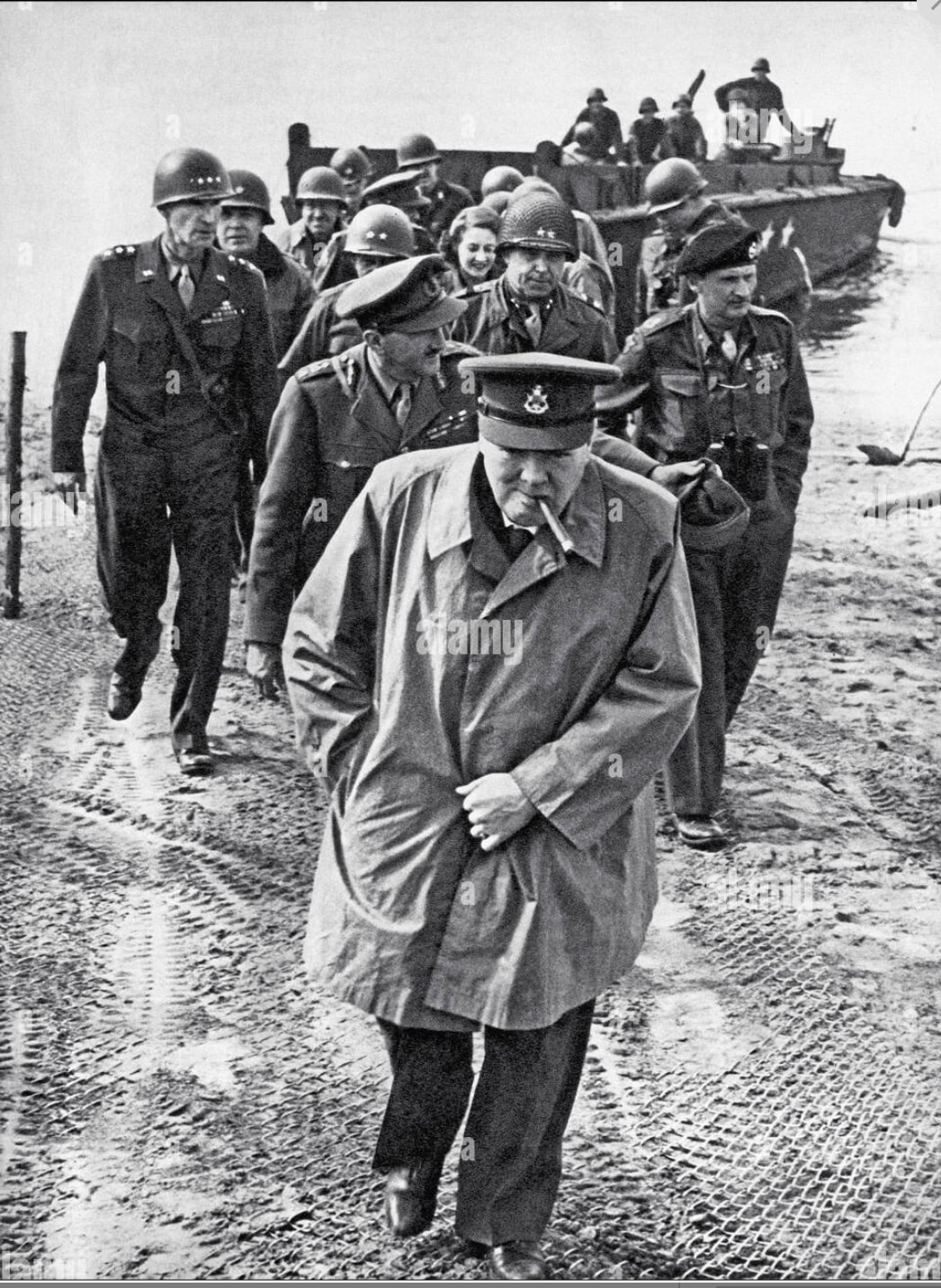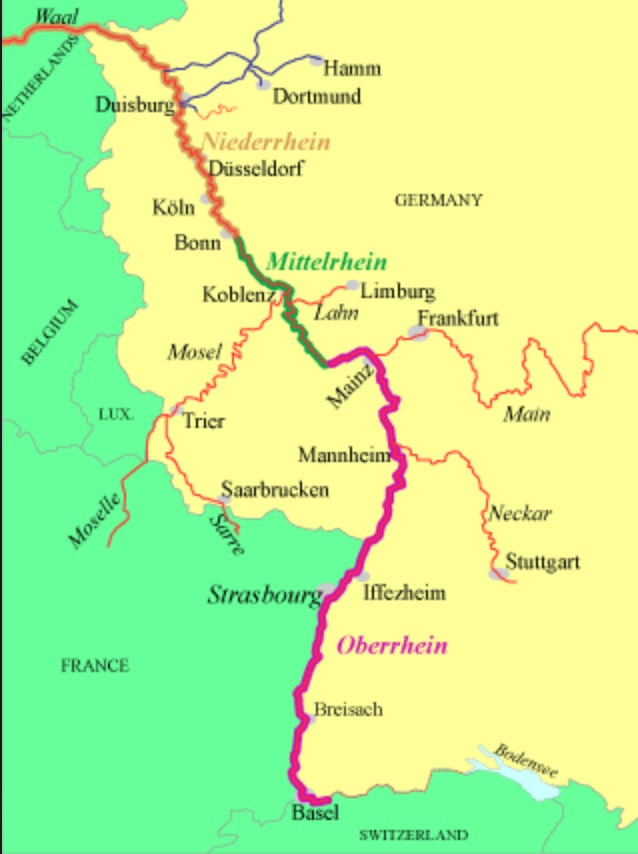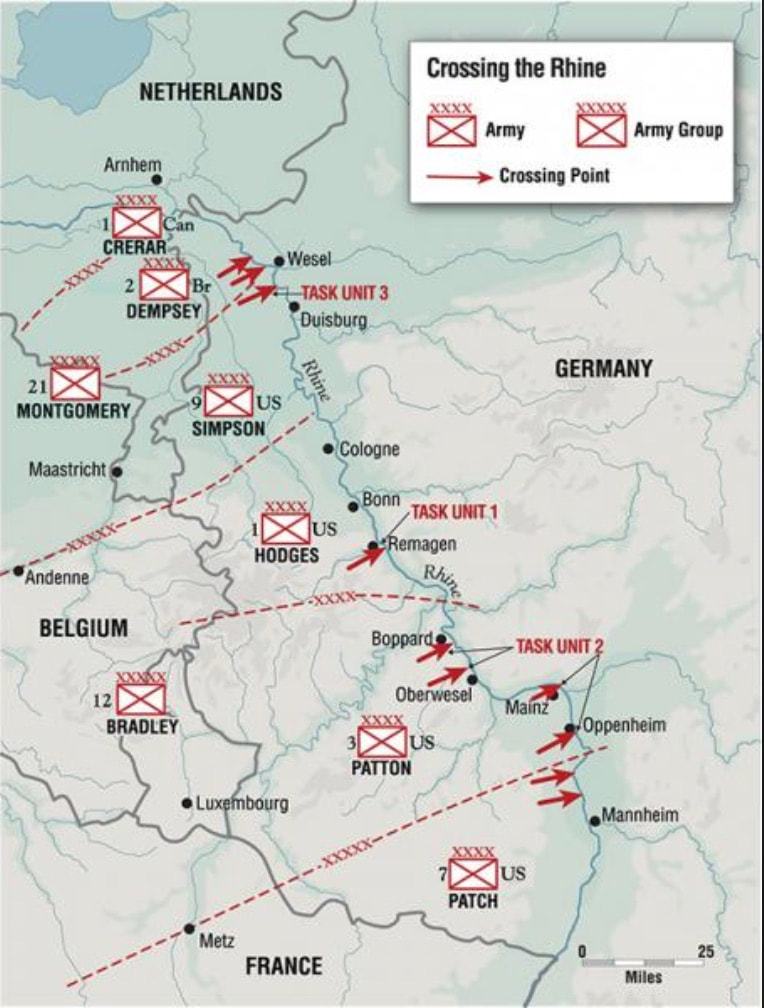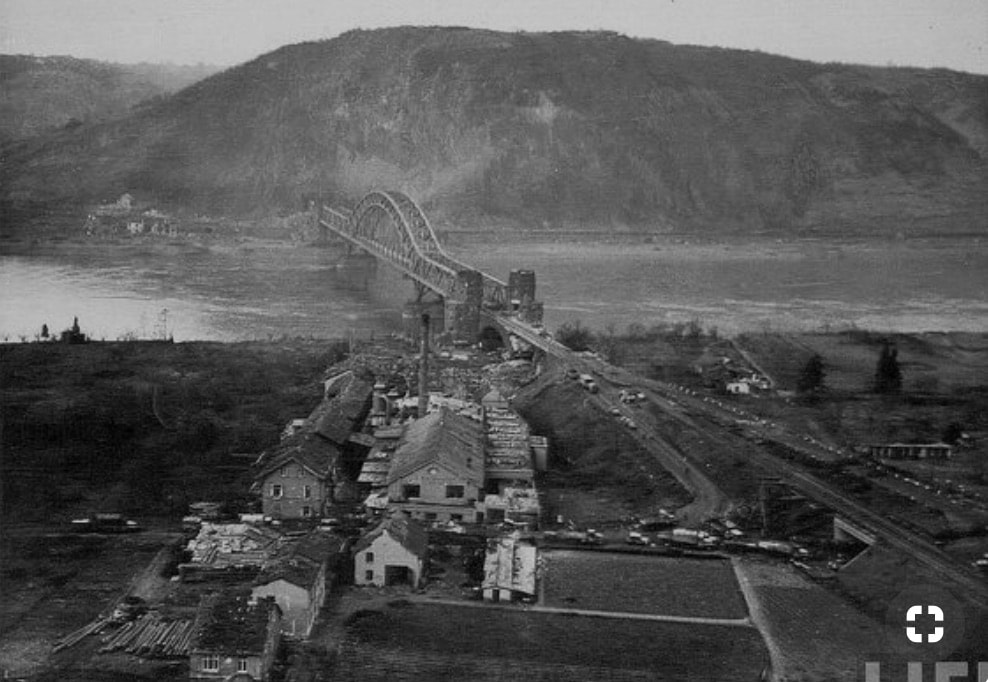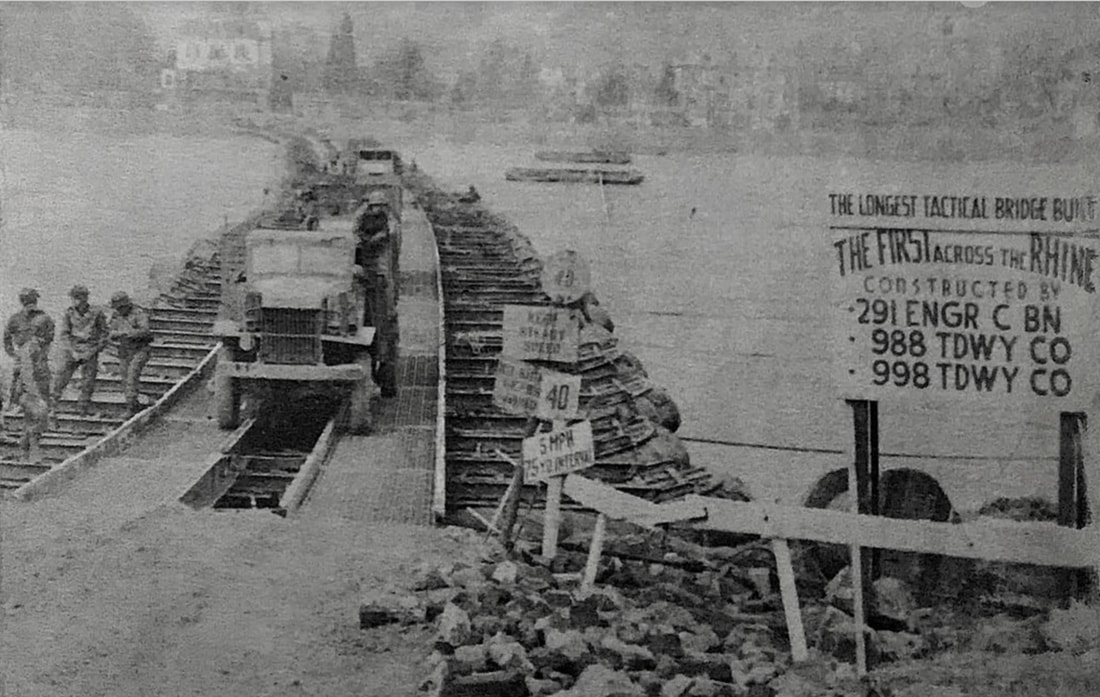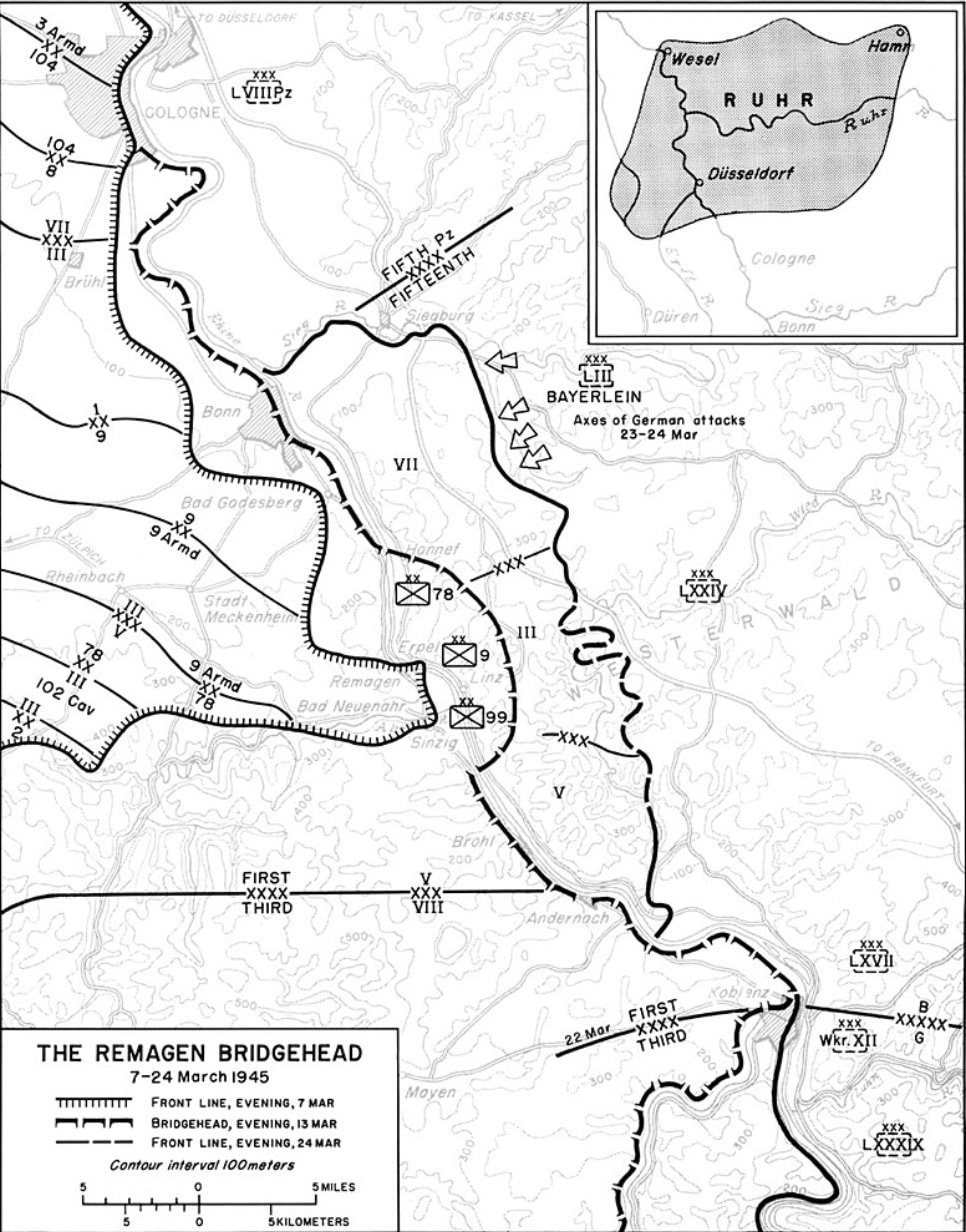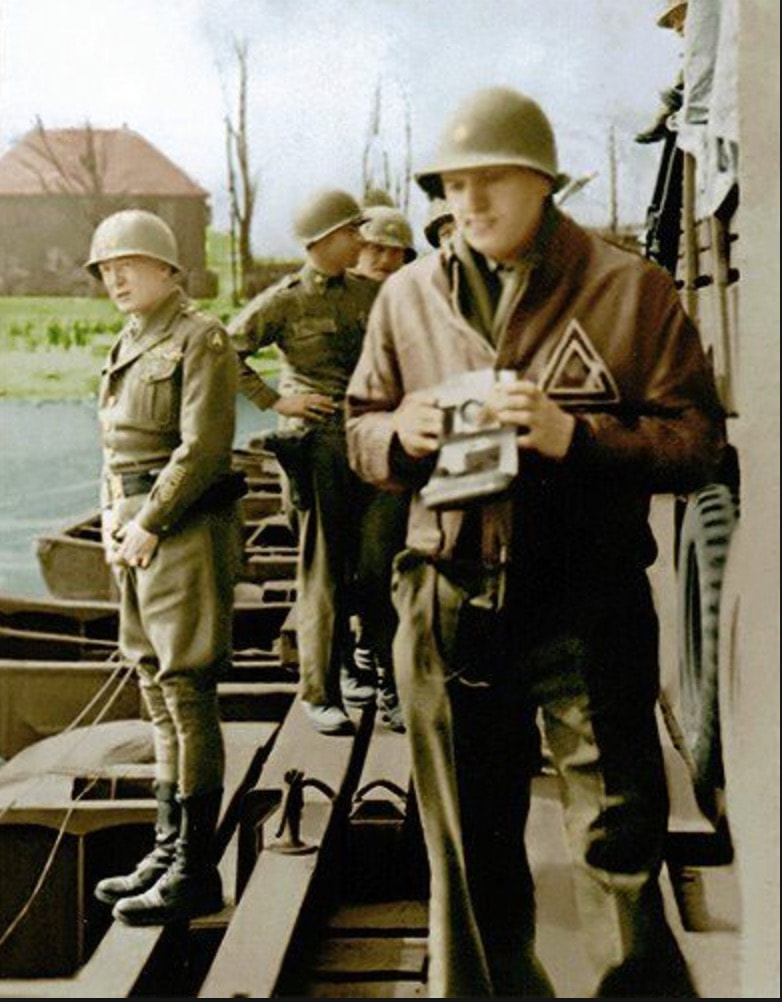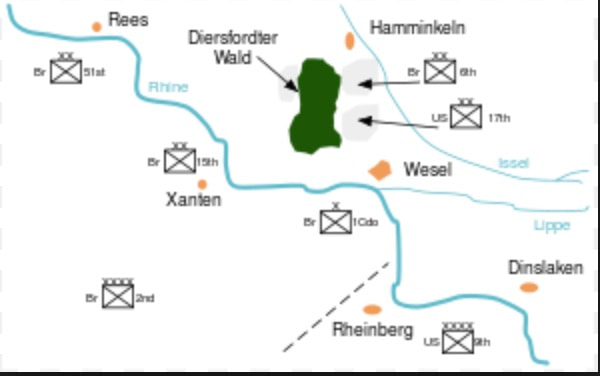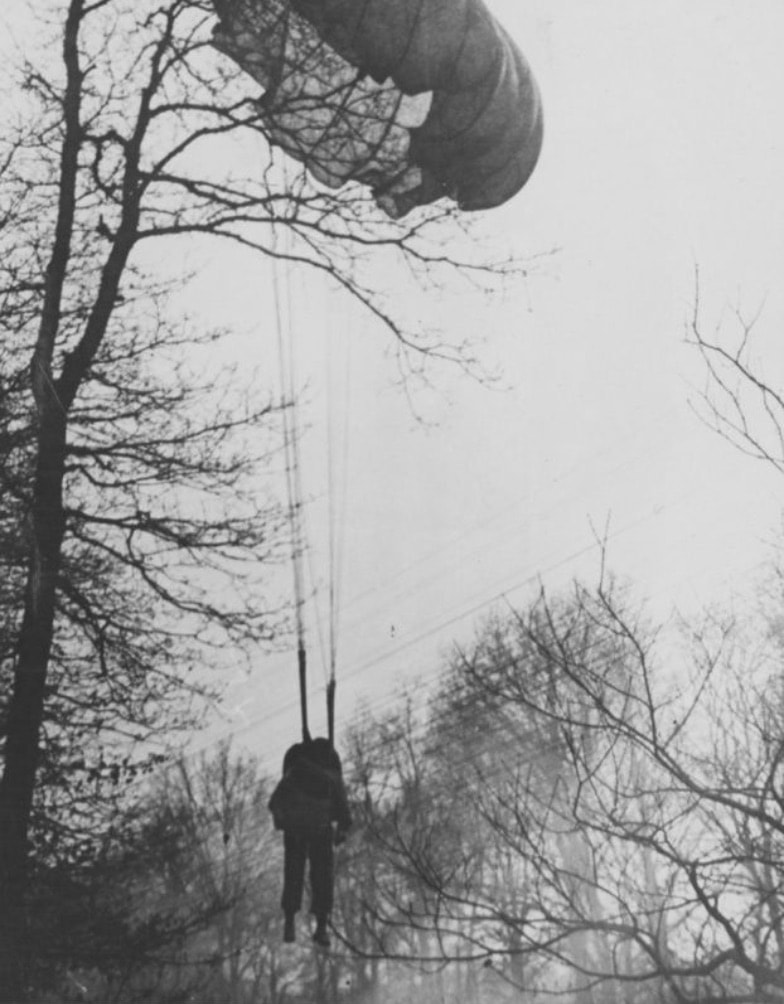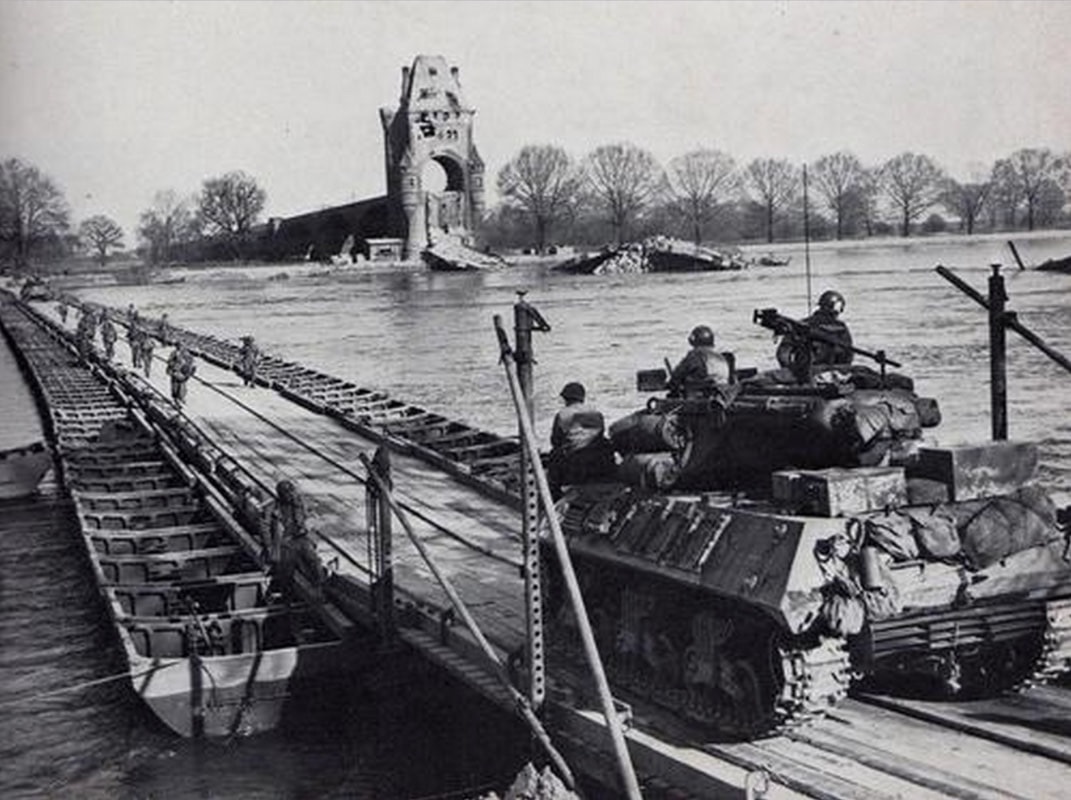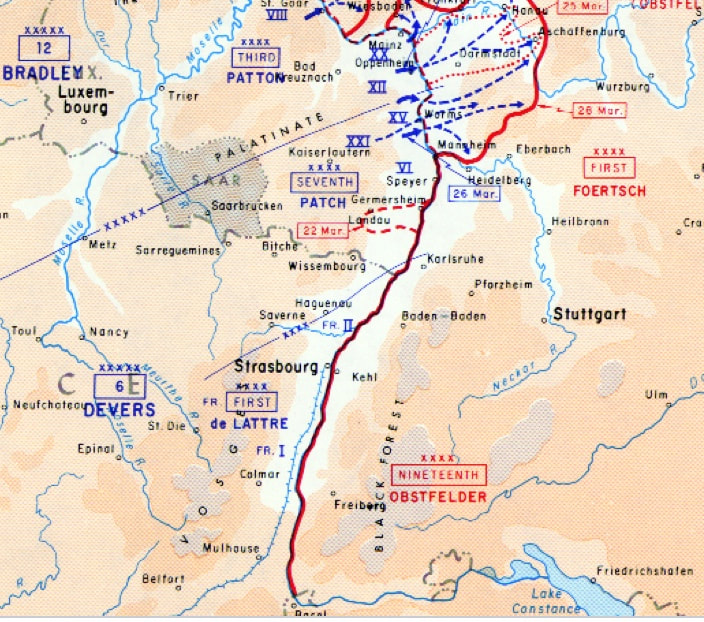bigpigeon.us webpage WWII Germany > The ETO > Central Europe > Crossing the Rhine, © 2024 by Robert A. Christiansen, updated by RAC 31 Jan 2024.
In March 1945, Allied forces crossed the Rhine River at multiple locations and proceeded into the German interior.
In March 1945, Allied forces crossed the Rhine River at multiple locations and proceeded into the German interior.
|
By the beginning of spring 1945, the Western Allies had broken through the Siegfried Line and would soon control the entire German left bank of the Rhine River. The weakly-defended interior of Germany lay beyond the final barrier of the Rhine.
In the west, German strength had been dissipated by their losses in the counteroffensives in the Ardennes and northern Alsace. In the east, Russian forces were approaching the German capital of Berlin. The German military destroyed all but one Rhine River bridges as the Allies approached. Nevertheless the Allies managed multiple Rhine crossings, all successful. In most Rhine crossings, infantry first crossed in a variety of small vessels at night, establishing an east bank beachhead. These beachheads helped protect engineering troops as they assembled modular pontoon bridges. Numerous bridges were built across the Rhine in March and April of 1945, many heavy enough to support armored vehicles. A limited number of vehicles could cross by pontoon ferry before a bridge was completed. Once a bridge was available, the crossing could be exploited against weak to moderate German opposition. |
US Army engineering troops facilitated crossings by providing and staffing small boats, improving local roads, and most-importantly building bridges. In addition, the US Navy assigned a task unit to each of the First, Third, and Ninth Armies, as shown on the following map. These task units included numerous vessels small enough to be trucked to the water near crossing sites.
|
Listed in chronological order below are the three best known Rhine crossings, the first over an existing bridge, the second amphibious and the third amphibious and airborne. The numbers correspond to the TASK UNIT numbers on the accompanying map.
|
|
With the exception of the bridge at Remagen, the Allies found the bridges across the Rhine destroyed. To exploit existing infrastructure, the temporary replacement bridges were often built near the destroyed bridge.
In the Spring of 1945, the Allies built over 50 bridges, including a few railroad bridges, over the Rhine. |
First Across the Rhine - The US First Army on The Middle Rhine
|
Remagen Timeline:
|
|
historic trivia: The Ludendorff bridge was completed in 1916 during World War I. After WWI, the American Army and then the French Army occupied Remagen. At that time, French engineers shrewdly modified the bridge to make demolition more difficult.
Remagen Timeline (continued):
|
|
Remagen Timeline (continued):
By 24 March, all three of the First Army's corps, VII, III, and V, had a presence east of the Rhine. |
Next Across the Rhine - The US Third Army's Rhine Crossings
|
Late in the evening of 22 March, XII Corp's 5th Infantry Division began a Rhine crossing near Oppenheim against little resistance. It is thought that the accompanying photo of General George Patton documents Patton urinating into the Rhine River.
Subsequently VIII Corps made two crossings downstream, to the south of Koblenz.
I have read that fourth and final Third Army crossing was made without loss of life:
|
The British-US Major Rhine Crossing
|
Bernard Montgomery's 21st Army Group began the major Rhine crossing near Wesel one day after Patton's first crossing. The 21st Army Group included British, Canadian, and American armies.
|
The US Ninth Army's Rhine Crossings
|
The Ninth Army's XVI Corps began crossing near Rheinberg fifteen miles upstream of Wesel early on 24 March.
Because of Ninth Army's limited bridge access and limited maneuver room east of the Rhine, the crossings of Ninth Army's XIII and XIX Corps were delayed for several days until later in March. I don't have dates. |
The US Seventh Army's Rhine Crossings
|
Seventh Army's XV Corps dashed northeast across the Palatinate through Kaiserslautern to the Rhine. XV Corps then crossed the Rhine near Worms south of the Third Army's Oppenheim crossing beginning early on 26 March.
The accompanying photo shows the Alexander Patch Seventh Army bridge at Worms between Oppenheim and Mannheim. I have no crossing information for Seventh Army's two remaining corps. |
The French First Army's Rhine Crossings
The French First Army anchored the south end of the front lines along the Rhine River. Although not reflected on the following map, on 27 March 1945 the French sector was extended to include the entire upper Rhine River from Speyer south to the Swiss border.
|
The French First Army largely depended on whatever equipment and supplies the US Army provided, and thus lacked the advanced amphibious equipment used by the other allied forces. Here is what I have read of the French First Army's Rhine crossings, in chronological order.
The French II Corps:
|
Crossing the Rhine - a Detailed Overview
|
Click to see the full map showing all ETO crossings, a portion of which is shown immediately above.
|
Sources for Big Pigeon's The ETO > Central Europe > Crossing the Rhine webpage:
Pottawattamie Area WWII Dead - The ETO > Central Europe > Crossing the Rhine:
† Burch, Robert Joseph, SN 37-478-134, US Army, Harrison Co.
- Major Source: The Last Offensive, chapters XI, XIII, XIV, XV (from The U.S. Army in World War II, European Theater of Operations series, by Charles B. MacDonald, 1973) - http://www.ibiblio.org/hyperwar/USA/USA-E-Last/index.html#index.
- The webpage header photo Churchill at the Rhine shows Winston Churchill leaving a US Navy landing craft on the east back of the Rhine on 25 Mar 1945 at the conclusion of Operation Plunder. The photo is courtesy of alamy.com and replaces an uncropped version found at www.warhistory.com.
- The Rhine River Crossings by Barry W. Fowle - http://atloa.org/wp-content/uploads/The-Rhine-River-Crossings.pdf.
- Treadway Bridge at Remagen photo - https://upload.wikimedia.org/wikipedia/commons/thumb/9/98/First_US_Army_Engineer_built_pontoon_bridge_crossing_the_Rhine_at_Remagen_during_WW2.jpg/1024px-First_US_Army_Engineer_built_pontoon_bridge_crossing_the_Rhine_at_Remagen_during_WW2.jpg.
- Remagen Bridgehead Growth ... - https://en.wikipedia.org/wiki/Battle_of_Remagen#/media/File:The_Remagen_Bridgehead.jpg.
- Dead Allied Paratrooper near Hamminkeln photo - https://www.pinterest.com/pin/486529565965815166/.
- The Upper Rhine, 22 to 28 March 1945 map - excerpted from a map found at pinterest.
Pottawattamie Area WWII Dead - The ETO > Central Europe > Crossing the Rhine:
- Taken from the bigpigeon.us WWII Dead module.
† Burch, Robert Joseph, SN 37-478-134, US Army, Harrison Co.
- 194th Glider Inf. Regt., 17th Airborne Div., XVIII Airborne Corps, First Allied Airborne Army; KIA 24 Mar 1945 in Landing Zone S, E of Rhine River, N of Wesel, Germany; Operation Varsity - The ETO > Central Europe > Crossing the Rhine.
- 347th Inf. Regt., 87th Inf. Div., VIII Corps, Third Army; KIA 26 Mar 1945, on the Rhine at Boppard, S of Coblenz, Germany during a Rhine crossing; The ETO > Central Europe > Crossing the Rhine.
- Co. C, 310th Inf. Regt.; 78th Inf. Div., III Corps, First Army (Frost's battalion was attached to Combat Command B, 9th Armored Div.); KIA 10 Mar 1945, near Linz, Remagen Bridgehead, Rhineland-Palatinate, Germany; The ETO > Central Europe > Crossing the Rhine.
- Co. I, 16th Inf. Regt., 1st Inf. Div., VII Corps, First Army; KIA 20 Mar 1945 Remagen Bridgehead, Germany; artillery shell; The ETO > Central Europe > Crossing the Rhine.
- 7th Inf. Regt., 3rd. Inf. Div., VI Corps, Seventh Army; KIA 26 Mar 1945 near Frankenthal on the Rhine River S of Worms, Germany; The ETO > Central Europe > Crossing the Rhine.
- 395th Inf. Regt., 99th Inf. Div., III Corps, First Army; KIA 13 Mar 1945 E of Remagen, Germany; The ETO > Central Europe > Crossing the Rhine.
- Co. A, 355th Inf. Regt., 89th Inf. Div., VIII Corps, Third Army; KIA 28 Mar 1945; The ETO > Central Europe > Crossing the Rhine.
